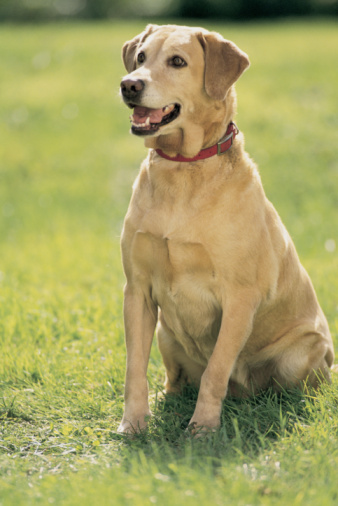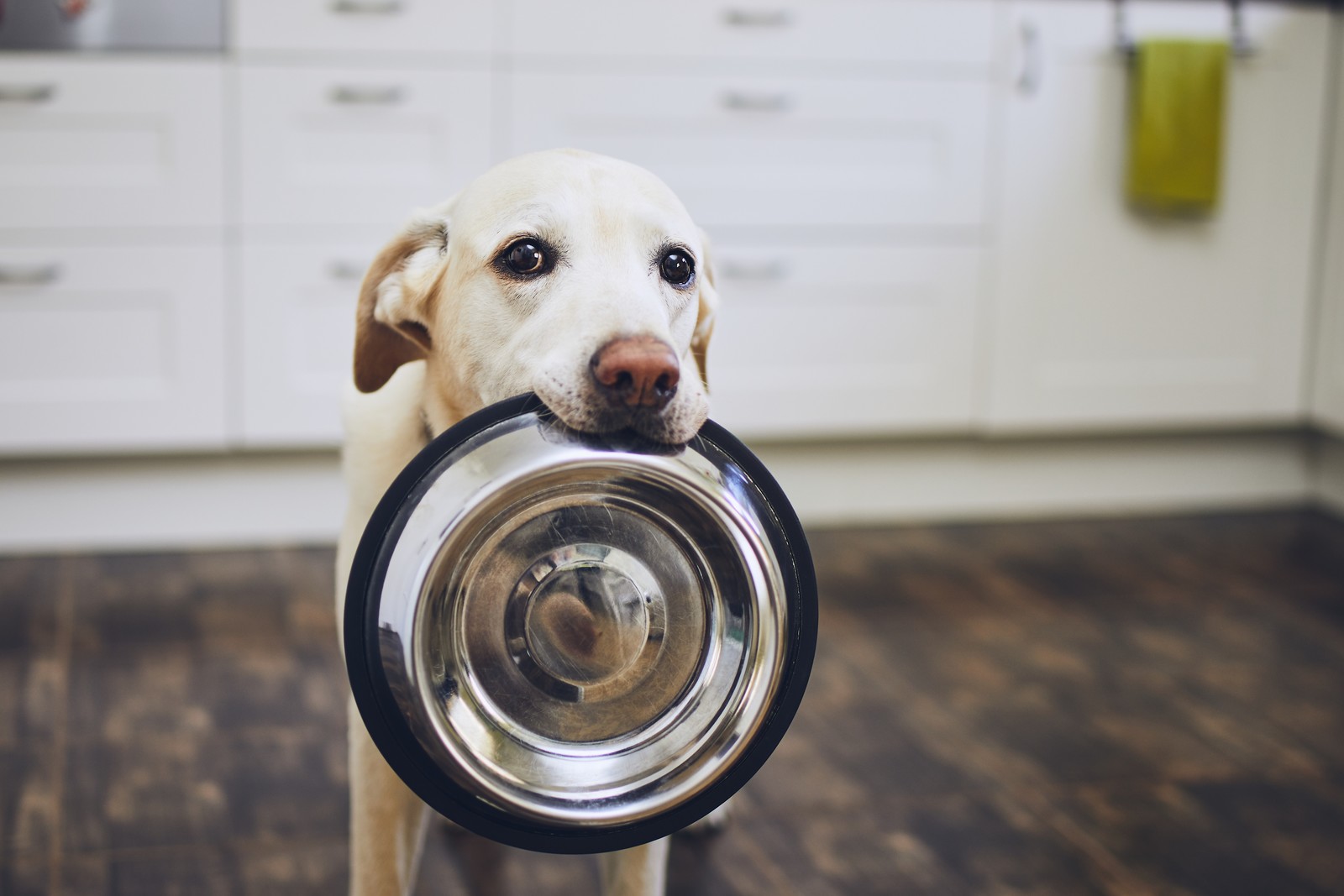by Albert John
To teach your dog to respond to the whistle-blast or a series of blasts, go back to how you taught the dog the skill in the first place, and incorporate the whistle in place of the spoken command. In this situation, the “sit” command is being refreshed with the pull up-push down maneuver, but rather than the verbal, “Sit” a single whistle-blast is used instead.
You’ve no doubt heard that you shouldn’t turn the issuing of a command to your Lab in a negative negotiation. In other words, it should be, “Come!”… not, “C’mon, Buster, isn’t it about time you came in the house? Now don’t make me come after you… hey, don’t ignore me like that! I told to come! Don’t you prance around me! I mean it when I say come!”
One of those your Lab will understand, the other one he’ll look at you like you have two heads. This, of course, is not particularly revolutionary news to rattle the world of a Labdom; neither is the fact that there are some people a Lab will listen more readily then others. They are, after all, intelligent creatures – they know who they must obey and who is a pushover; who will expect compliance and who will be unable to back up their words. I hate to break the bad news, but unfortunately, most of the time, most Labs will respond more reliably – and quickly – to a deeper, male voice compared to a higher-pitched female voice, even when the same command is given in the same manner.
There is a tool, however, that can even the playing field in communicating with your Lab. Actually, there are a couple, but because I wasn’t clever enough with the title, I already gave away the one I’m talking about: the whistle. When blown in the same fashion and with the same meaning, not only will the whistle carry across the distance and cut through distraction, but everyone sounds the same, for the whistle blast is much easier to duplicate from person-to-person than a tone of voice.
With persistence and dedication to a basic training regimen, you can teach an adult dog to respond to the whistle; it is best, though, to incorporate the whistle into your puppy/young dog training. Either way, when done correctly, a Lab will come to interpret the whistle as a command needing immediate attention, responding even when a pleading, begging, forceful, happy, come-here-and-I-promise-to-give-you-a-treat string of verbal commands fall upon furry deaf ears.
Using the Whistle
It may look silly to have a section about how to use a whistle – who doesn’t know how to use a whistle? – but there are some specific techniques that will get through to your dog. I’m not talking about whether you use one blast or two to mean a certain command, but the actual whistle blast instead. If it’s lazy and weak, your command will be interpreted the same way.
Simply put, after a deep breath that you release from your diaphragm, you should practically spit into the whistle, cutting off sharply by slapping your tongue to the roof of your mouth. When done right, your ears will ring. There should be no puffing of cheeks, no trailing off, no varying pitch – it should be one level, one volume, and then stop, instantly. This is the classic “whistle blast,” used most often for the “sit” command; when you get it right, you’ll know it. And you can really only get it right when your tongue hits the roof of your mouth to close off the air. If you simply try to stop blowing as abruptly as you can, some air will still escape your lips, weakening the end of the whistle. That curt blast is what you’re after.
The “trill” is used most often for the “come” command, and this can be done a variety of ways – for instance, a series of (or as few as two) whistle blasts, or a more melodious rolling of the whistle (which sounds especially good if the whistle as a pea). If your dog is trained from the beginning to “come” to either sound, you can actually use both: The rolling trill can mean a kind of happy, “C’mon, boy let’s get goin’ back to the house!”; the series of sharp whistle blasts can get through to him as, “You can come back here right now!”
Teaching “Sit”
During your earliest obedience lessons, you’ve been helping your pup into a sitting position, tying in the spoken command, “Sit” with the action of the dog’s bottom hitting the floor. You may have helped the dog get into that position with a tug on the collar and a push down on the rump, or maybe you used a treat raised high over the pup’s head until the dog had no choice but to sit. It doesn’t matter how you taught sit, but now that it’s time to incorporate the whistle, go back to your original method.
In the same manner that you introduced the spoken command, so should you introduce the whistle. When you first taught sit, you tied in an action with the word – now you’ll be joining an action with a word and the whistle, at least at first. Let’s say you taught the dog to sit with the pull up-push down maneuver: You tugged up on the dog’s collar while pushing down on the rump, and as the dog’s behind was moving to the floor, you said, “Sit.” Over countless repetitions, your hands were no longer required, and the dog understood that the spoken command necessitated a particular action. When the command wasn’t followed, you reminded him with pressure on the rump.
Now that you have a whistle in your hand, you do everything the same way, except introduce the whistle blast immediately after saying, “Sit.” With a pup, it doesn’t need to be ear-splitting, but it should be sharp. The technique is: pull-up-push down, “Sit,” tweet! After numerous repetitions, start to remove some of the other cues to sit. First remove the physical manipulation, and just say, “Sit,” followed by the whistle. After a while, then, remove the spoken command, and only give the whistle. At any time that the dog hesitates, immediately say, “Sit”-tweet!
If he doesn’t respond to the whistle, you have two options for reminding him – the pull up-push down, or the verbal command. Whichever one you use, make sure to immediately follow it with the whistle so the dog can make the association.
Then it’s just a matter of incorporating the whistle into any and all situations where you want your dog to sit – on a walk, playing in the yard, at your side, before his meal, in the house, etc. The real benefit is that when your Lab consistently obeys and respects the whistle , you’ll be able to blow it when he’s particularly interested in something while away from your side, and he’ll sit and look at you. When you’ve reached this level, you’ve just performed a “whistle-stop,” and it wouldn’t be much of a leap to start some basic handling drills.
Teaching “Come”
The manner behind teaching “come” with the whistle is the same as it was for “sit”: you go back to how you taught the dog to come in the first place, have a little refresher, and then incorporate the whistle cadence you want to mean “come” – either a series of blasts or a sing-songy trill. Then, start subtracting the cues one at a time: With your Lab on a “sit” and “stay,” first remove the tugs on the checkcord or leash that got him started on his feet in the first place, then eliminate the spoken command. If the dog does not respond to the whistle, you, again, have two options: either give the tug reminder with another whistle; or issue the spoken command followed by the whistle (“Come!” –tweet-tweet-tweet!). Mixing up these reminders will keep your Lab on his toes.
lways use the same whistle while training; after your dog listens reliably, you can change whistles – but still keep the same type of blast or trill that he’s used to. And finally, though the whistle helps make everyone in the family sound the same by removing variations in voice tone – which can lead to variations in how well your Lab listens – that is only true if everyone blows the whistle the same way. Just as one person’s low, commanding voice may be followed more readily compared to a weak, pleading voice, so will a strong, powerful whistle blast be taken more seriously than a shaky peep.
You’ll probably find that your Lab comes to love the sight of a whistle, and a few soft squeaks will send him into convulsions of glee as he anticipates going outside for fun in the yard or park or field. Just make sure you get a lanyard for your whistle to keep your hands free for tossing bumpers or tennis balls.







